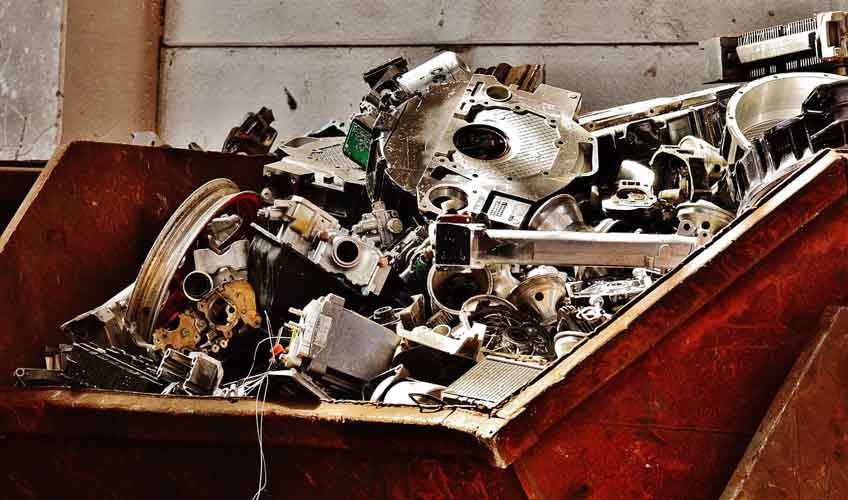We’ve all seen the labels: “made from 30% recycled aluminum” or “contains 100% recycled steel.” And most of us have recycling bins in our kitchens or garages where we collect used metal cans and containers. But what happens after those cans get picked up? And what about when you contact a metal recycling center for a scrap metal pickup? Does it all end up in the same place?
Arriving at the recycling center is just the first step in your scrap’s journey as it begins its life as a new car, can, appliance, kitchenware, industrial structure—or one of hundreds of other metal objects it could turn into. Come with us as we investigate the lifecycle of a piece of recycled metal—we promise it will make you a lot more appreciative of that recycled aluminum can!
Sorted, Separated and Cleaned
Could you pick out a hunk of carbide from a lineup? What about telling 400 grade stainless steel from 304 grade? That’s essentially the first step in metal recycling: separating different metals and grades from one another. Most people don’t break down and sort scrap metal before they have it picked up. It comes in one big heap. Additionally, some pieces—like used car parts or appliances—may have lots of different components that need to separated out. To detect the chemical makeup of each metal item, sorters use specialized cameras, chemicals, lasers, magnets and other detections to test and rate metal for processing. Complex items, like appliances, have their electrical parts and motors removed and pieced out. Then like metals are placed into separate loads for transport.
The Melt Down
Once we get enough of a certain kind of metal, it’s time for the next step in its revivification process. The sorted scrap metal is compacted into cubes and then taken to a smelter or metal furnace so it can be melted down and purified for reuse. Aluminum—the favored material of soda cans and food containers—must be shredded before smelting. Once they reach a liquid state, they’re poured into smelting pots to prepare for the next step in their journey.
Making Ingots
Recycled metal typically doesn’t go directly from its former life into its next. Before recycled cans, auto parts, appliances and wires can become new products, they’re formed into ingots, a fancy name for metal bars. And why, exactly, are they shaped into ingots? So they can be stored, shipped and sold to manufacturers for future use.
Remelted and Cast into New Goods
Most of the time, ingots of purified, recycled metals are sold to manufacturing plants. Once they arrive at their final destination, they’re then remelted so they can be poured into various molds for their new lives. Often the type of processing it undergoes determines its ultimate fate. For instance, when steel is refined using a basic oxygen furnace, the final result isn’t as strong as materials finished with an electric arc furnace. The former adds oxygen to the steel mixture, meaning these ingots will likely go on to be pails, cans, or refrigerator encasements rather than industrial beams or reinforcement bars.
The Process Starts All Over Again
You know how the song goes: to everything, turn, turn, turn. The great thing about metal is that it can be recycled again and again in a never-ending cycle of reuse. And that’s where you come back into the equation. By recycling used metal products, you’re the most important actor in the whole cycle. You spark future generations of new products every time you throw a soda can into the recycling bin or arrange for Gardner Metals to schedule your metal recycling pickup. And that recycled can with the label? It could be made with metal you tossed out years ago. See? Told you cans were pretty cool!

